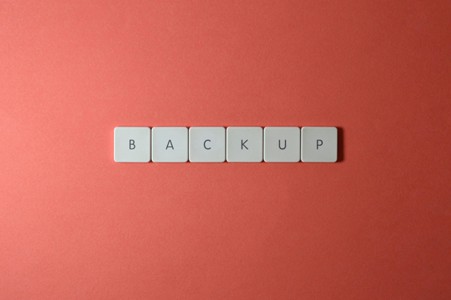
One disaster can easily change your life forever, whether it’s a cyber-attack, fire, earthquake, or any natural or man-made catastrophe. While there are many factors to deal with in the aftermath, the most damaging is typically the loss of your data. Would you be able to recover, or would it grind your operations to a halt?
Every small business runs on data, which includes customer information, financial records, communications, product files, and more. Yet data security often falls to the bottom of the to-do list.
The Federal Emergency Management Agency (FEMA) asserts that 40% of small businesses never reopen after a disaster, and another 25% shut down within one year. That's a staggering 65% failure rate due to a lack of preparation.
Here's the good news. Protecting your data from disaster doesn't require a dedicated IT team or an enterprise budget. With the right strategy, tools, and a little foresight, you can implement a backup and recovery plan that minimizes downtime and gives you peace of mind.
Let’s take a hard look at practical and easy-to-follow steps to help you protect your most valuable business asset: your data, and why you should have backups.
What is data backup and its importance?
There’s no sugar-coating the cold fact that if you don't have regular backups, your business is one unexpected event away from potential collapse. Whether the threat is a hard drive failure, an employee mistake, or a fire that wipes out your office, losing data can derail your business overnight.
It doesn’t even have to be the result of a catastrophic event. One untrained employee clicking on a malicious link or attachment in a phishing email is all it takes, taking your business from a healthy growth pattern into sheer chaos – unless you’re ready for it.
According to TechNewsWorld, cyberattacks targeting small businesses have risen steadily in the past decade. More so, industries governed by regulatory compliance (like healthcare, finance, or legal services) face stiff penalties if they can't produce secure and reliable backups when audited.
You need a solid plan to backup your data for a speedy recovery from a disaster.
What is a backup and recovery plan?
If you do not have a solid Backup and Disaster Recovery plan in place, you’re playing with fire. Not sure where to start with protecting your business data? Here are some simple, effective backup and recovery plans that every small business can use.
Test Your Recovery Plan
A plan is a good thing to have – as long as you make sure it works. If you don’t test your backup and recovery system until you’re in crisis, you may be in for a very rude awakening. and then discover their files are incomplete or corrupted.
Set up disaster recovery drills to run quarterly at least. Theses allow you to measure how fast files can be restored, identify gaps in your backup process, and ensure that key team members know their roles
Recovery time objectives (RTO) and recovery point objectives (RPO) are critical metrics. Your RTO is how long it takes to resume operations, while your RPO is how much data loss you can tolerate. Define and measure both during your test runs.
Backup Locally and in the Cloud
Both should be reliable, but restoring data from a local backup is much faster than from the cloud.
Local Backups
Restoring data from a local backup is much faster than restoring from the cloud. There should be several: for a non-cloud-based system (where all operations are in the cloud), this starts with the storage on a workstation, then all workstations are backed up on a server.
The crucial next step is an off-network storage device like a NAS or SAN – only connect these to the network during the backup process. If connected to the network, these devices can be infected along with the network at large.
Cloud Backups
Cloud storage has revolutionized small business data protection. These services offer affordable, flexible, and secure off-site storage that keeps your data safe, even if your physical office is compromised.
Popular options include Microsoft OneDrive, Google Workspace, Dropbox Business, and more robust solutions such as Acronis, Backblaze, or Carbonite.
In the event of local backup failure, cloud backups are your ultimate line of defense against disasters and cyber threats.
Institute Automatic Backups
This saves time and reduces errors.
Set your backups to run automatically - after business hours to avoid interfering with employee productivity. Tools like Acronis, Veeam, and Windows Backup can automate schedules seamlessly.
Team Training
OOPS! Untrained employees can shut down your business. Your employees can either be your biggest risk or your strongest defense. Most data breaches happen due to human error. That's why training is crucial.
Not only should employees undergo regular Security Awareness Training, but also on all new procedures and applications introduced. People who don’t know what to do often do the wrong thing.
Remember that empowered employees make smarter decisions and make data safer.
Maintain and Monitor Backups
Backup systems aren't a ‘one and done’ proposition. Like any other technology, they need care and maintenance.
Establish a maintenance routine:
Review backup logs weekly
Check for failed or missed backups
Update your backup software
Replace aging hardware on schedule
Designate a "data guardian", someone responsible for oversight and reporting. Regular maintenance avoids nasty surprises when you need your backups most.
Keep an Eye on Storage Capacity
Do not let yourself get blindsided by a sudden notification that ‘storage is full.’ Always leave 20-30% of your backup storage free. This buffer ensures there's room for emergency backups or unexpected file growth.
This is also an excellent reason for multiple local and cloud backups: if one storage device gets full, most likely the others don’t.
Summary
Ensuring that your data is ‘disaster-proof’ a smart investment, as the cost of lost data (measured in lost revenue, damaged reputation, and potential regulatory fines) far outweighs the effort to prepare. To make sure your business is protected, set up both cloud and local backups, automate and test your recovery processes, educate your staff, monitor storage, and rotate hardware. With a solid backup and recovery plan in place, your business will be ready to weather any storm, from natural disasters to cyberattacks or even the occasional spilled coffee. Don't wait for a crisis to act.
Disasters strike without warning and can easily compromise your data. Is your business protected? Get custom backup solutions that ensure zero downtime, automatic security, and instant recovery. Because when disaster hits, the best backup isn't an option. It's a necessity.
Contact us now before it's too late!
Frequently Asked Questions
What is the difference between having good backups and having a good disaster recovery plan?
The latter isn’t possible without the former. If you don’t have reliable and tested data backups in place, there really is no recovery from a disaster, at least from an IT services point of view. Once the data is gone, and exists nowhere else, a typical business will not survive. You need both. If you have some sort of IT support, but do not have either backups or a disaster recovery plan in place, perhaps it’s time to re-evaluate the quality of your IT support.
What are the different types of data backup locations?
What is the best method for data recovery?
Depending on the nature of the disaster, it will always be fastest to restore data from your local backups, which may not be available in the event of a fire, flood or earthquake – at that point, rely on cloud backups, which are slower, but offsite.
How often should you do security awareness training?
The old rule was at least annually, but with the current swiftly-evolving threat matrix, that doesn’t cut it anymore. Today’s recommendation is every 3 to 4 months.
How secure is your network?
As a reputable member of the IT Support Los Angeles community since 2002, IT Support LA offers a FREE, no-risk network and cybersecurity assessment. It is a non-intrusive scan that allows us to deliver a comprehensive report that is yours to keep. No strings, and no obligation to ever use our Managed IT Services.
The best defenses are expert cybersecurity to protect your data from theft, and a top-notch Managed Services Provider (MSP) to ensure continued reliability and defenses against newly emerging threats.
With our 100% Money Back Guarantee in writing, we offer a risk-free way for prospective clients to try us out. Because we do not require a ‘hard’ contract, our clients can fire us at any time with 30 days’ notice. We have to be good.
Among the Managed IT services we provide:
IT HelpDesk Service
Onsite IT Support
Cybersecurity
Cloud migration and management
Email migration services
Backup and disaster recovery
VoIP phone systems
IT disposition and recycling
Office moves
White label services (IT to IT)
IT Support LA is an award-winning Managed Services Provider (MSP):
o 3 Years awarded Best IT by the Small Business Expo
o Awarded 2nd best company of any type in the US by the Small Business Expo SB100
o Awarded Best IT Support in California by Channel Futures
o Winner of Best IT in Los Angeles by Channel Futures
o Listed as one of the world’s Top 501 MSPs by CRN and in the top 250 in the ‘Pioneer’ listing
o 4 years listed as one of the Top 501 MSPs in the World by Channel Futures
o Listed as #21 MSP in the World in Channel Futures NextGen 101
o Globee 2021 Bronze Award winner for Chief Technology Officer of the Year
o Globee 2022 Gold Award winner for Chief Technology Officer of the Year
o Named one of 2022’s 50 ‘Best’ businesses in California by UpCity
o Named Best of IT winner by UpCity
o Winner of Local Excellence Award for 2021, 2022 and 2023 by UpCity
o Named Best of Cloud Consulting winner by UpCity
o Certified as Top Managed Services Providers and Cybersecurity Pro by UpCity
o Named Best IT in Los Angeles by Expertise.com.
Planning an Office Move?
Contact IT Support LA today! We have the experience to ensure a seamless transition. After the office move, your employees will arrive at the new location to find their IT infrastructure ready and open for business!
For more information on office moves, or to receive your FREE no-risk network and cybersecurity assessment, just fill out the form on this page or call us at:
818-805-0909


